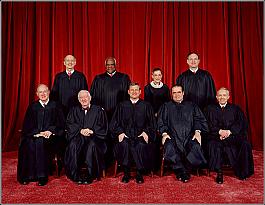Criminal Speech Ban Arising from Dogfighting Video Case Could Result in Prison for Artists, Journalists, Academics, Scientists and Others, NCAC Says
NCAC Files Brief Urging Supreme Court to Reject “Invitation to Censorship”
FOR IMMEDIATE RELEASE
CONTACT:
WASHINGTON, DC – In a friend-of-the-court brief filed this week in an important Supreme Court free speech case, the National Coalition Against Censorship, joined by the College Art Association, warned that a law banning depictions of animal cruelty violates the First Amendment right to free speech and that the exemption it provides for work with “serious value” rings hollow, given the long history of censorship of disturbing or unpopular images.
In defending the law, the Obama Administration is making the unlikely claim that local prosecutors and juries can be trusted with the power to decide whether certain words and images are worthy of First Amendment protection. Even more disturbingly, the government asserts that speech rights can be limited to promote a “social interest in order and morality,” and that the Constitution only protects material with “serious social value” that serves a “higher purpose.”
“The road to censorship is paved with good intentions” said Joan E. Bertin, Executive Director of the National Coalition Against Censorship. “The assertion that free speech rights depend on ‘balancing of the value of the speech against its societal costs,’ could threaten a vast array of material that is currently considered protected expression.”
“The government could argue, as it has with regard to depictions of animal cruelty, that flag burning, as well as some video games, rap music, and videos are not protected by the First Amendment because their social costs outweigh their value,” Bertin added. “This would overturn more than half a century of First Amendment law holding that even material with no discernible social value is, in the words of the Court, ‘as much entitled to the protection of free speech as the best of literature.’”
At issue in
The case arose in 2004, when 68-year-old Robert J. Stevens of
NCAC, which tracks and responds to censorship incidents around the country, provided numerous examples in its brief of works of art that were initially scorned but were later deemed to be groundbreaking and influential, from the Impressionist school to Marcel Duchamp to Andy Warhol. The brief also offers examples of art works containing images of animal cruelty that are directly threatened by this law, including Blood Orgies by Austrian artist Hermann Nitsch, in which ritualistic performances combine fake crucifixion with the disemboweling of lambs and other animals; as well as controversial work by French Algerian artist Adel Abdessemed and Belgian artist Wim Delvoye.
These and other similar artists, and anyone who buys or displays their work, would be at risk for prosecution. Even though their work has been shown in major museums and art venues around the world, juries could still conclude that it lacks serious value. The law invites subjective judgments about what work has “serious value” and creates a real risk that it will be used to punish the expression of ideas that are unpopular, unwelcome, or unfamiliar, NCAC said in its brief.
“The fact that we have determined as a society that animal cruelty should be prohibited does not mean that speech about animal cruelty or images of such acts can be similarly prohibited,” said Svetlana Mintcheva, Director of Programs for NCAC and an author of Censoring Culture: Contemporary Threats to Free Expression. “Indeed, a core purpose of the First Amendment is to protect the right to express odious or offensive ideas or ideas that undermine moral and legal norms. We don’t have to like the work and may even condemn it from an ethical standpoint – criminalizing it, however, forecloses an important discussion.”
Mintcheva noted that the law threatens not only artists but also journalists, photographers, television and film producers, scientists, academics, and others if their works—despite having “serious value” when considered as a whole—contain depictions of animal cruelty that juries may find lack such value when viewed in isolation. For instance, video footage of a bullfight from a travel documentary on
NCAC is represented in the case by Andrew E. Tauber and Craig W. Canetti of the law firm Mayer Brown LLP in
The National Coalition Against Censorship (“NCAC”) is an alliance of more than 50 national non-profit literary, artistic, religious, educational, professional, labor, and civil liberties groups that are united in their commitment to freedom of expression. Founded in 1974, NCAC has worked to protect the First Amendment rights of thousands of artists, authors, teachers, students, librarians, readers, museum-goers, and others around the country. To further its interest in protecting artistic expression, NCAC has established the Arts Advocacy Project, which works with visual artists around the country.
The College Art Association (“CAA”), a membership organization representing 14,000 artists, art historians, scholars, curators, conservators, collectors, educators, art publishers and other visual arts professionals, who join together to cultivate the ongoing understanding of art as a fundamental form of human expression, along with 2,000 university art and art history departments, museums, libraries and professional and commercial organizations.


